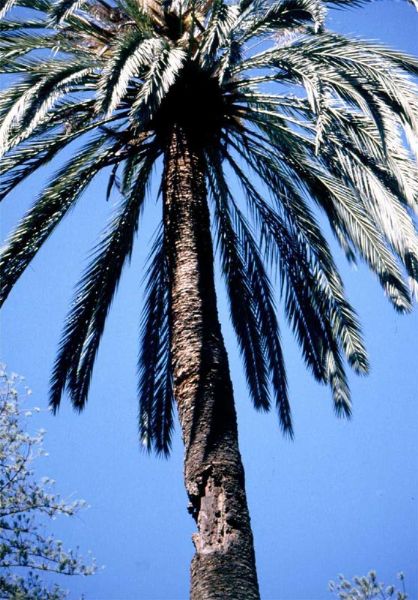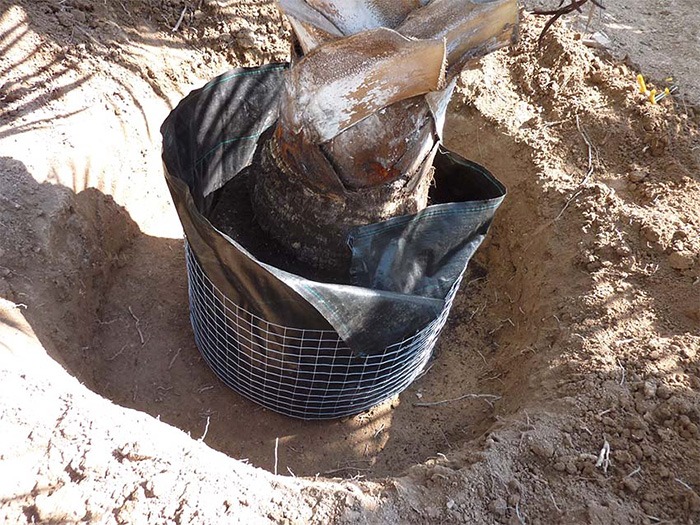Palms which initially develop their trunks underground, like Rhopalostylis., do not usually tolerate well being transplanted while they are young. But in general adult palms transplant quite happily, and large trees of many species can be successfully transplanted.
The best period for this in Mediterranean and temperate climates ranges from Spring, after the final frosts, until midsummer. Advantage must be taken of the palm´s vegetal growth and sufficient time allowed for the development of a new root system before temperatures start to drop.
Palms, as monocot plants, develop an abundant and fibrous root system, but they lack a main, pivotal and permanent root, and neither do their roots thicken with time.
On forming the rootball, these roots regenerate more or less in terms of length, but they can also form new ones from the base of the trunk (the various studies of T.K. Broschat and H. Donselman, University of Florida, highlight this with observations of the response of different species to transplanting).
With a view to encouraging the formation of new roots in those species that possess this quality, as in the case of Royal palms, it is a good idea to open up a trench about 10-20 cm. deep, a couple of months prior to the final transplant, and the soil should always be kept humid.
In the case of large trees, more preparation will be necessary, even a year in advance, if it is possible. A trench 60 cm. deep should be dug at a certain distance from the trunk, and filled with good soil that is kept humid until the time comes to transplant.
On the other hand, the size of the root ball can depend also on the dimensions of the tree that is to be transplanted, and on the kind of soil in which it is growing. Dry, loose soil should always be watered beforehand so that the root ball we would like to achieve disintegrates as little as possible.
As a general rule for palms that are smaller than 3 metres in height, a root ball of 30 cm. radius from the outside of the base of the trunk will be enough, and in the case of large or clustering palms, it would be better to have a somewhat greater distance between it and the trunk. Although withincertain limits the wider the root ball the more chances of success, the additional weight and increase in transport costs, make it less viable. Large Syagrus romanzoffiana can be transplanted with a root ball that has a radius of 15 cm., if they are not going to be planted directly in parks or gardens, or, as in the case of Sabal palmetto, even smaller, because the branching out of the remaining roots never occurs.
When pulling up and replanting large palms, it is necessary to make use of machines and heavy machinery. Notwithstanding, great care must be taken not to damage the trunks. We must remember that as palms lack cambium, they cannot heal themselves, and any injury they suffer will last indefinitely.Special attention must be paid to the eye or growth apex so that it avoids getting hit or hurt in any way, as if this happens, the palm may die.
Cutting away leaves is important to protect the palm against wind and to reduce transpiration of the plant. With this in mind, a good number should be pruned, and tied up for a certain length of time. Be careful not to impede the thrust and growth of the new leaves that are emerging.
Throughout the whole process of transplantation, irrigation is of fundamental importance. Watering should be regular and abundant, rather than of short duration and more frequent, as the latter will result in superficial roots only.












